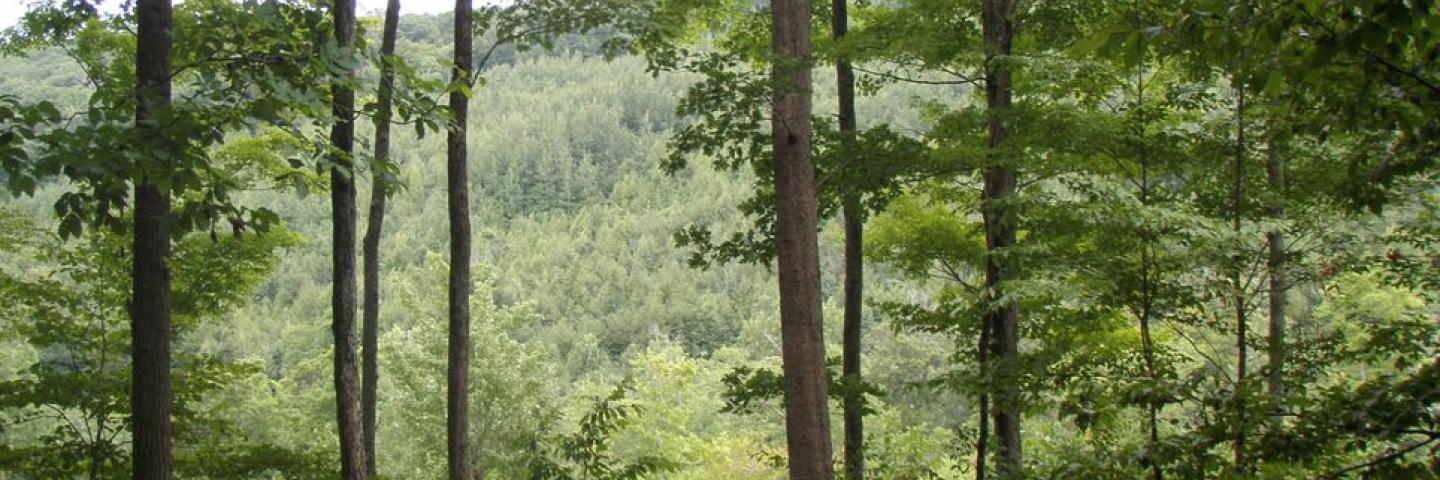
The Healthy Forests Reserve Program (HFRP) helps landowners restore, enhance and protect forestland resources on private and tribal lands through easements and financial assistance.
On This Page
The Healthy Forests Reserve Program (HFRP) is a voluntary program to assist landowners in restoring, enhancing, and protecting forestland resources on private lands through permanent easements, 30-year easements, and 10-year cost-share agreements. The program objectives are to promote the recovery of threatened and endangered species under the Endangered Species Act; improve plant and animal biodiversity; and enhance carbon sequestration.
Ranking Criteria
The HFRP ranking criteria for Minnesota was developed in consultation with the State Technical Advisory Committee and Federal, State and local wildlife agencies and organizations. The HFRP ranking includes criteria on size and fragmentation of offered acres, connectivity, proximity to riparian areas, biodiversity, invasive species, and availability of snags. Applications are evaluated and awarded points utilizing the ranking criteria.
Funding
HFRP contracts are awarded to applicants with the highest rankings until funds are exhausted.
Permanent easements:
- Landowners will receive 100% of the easement value of enrolled land
- Landowners will receive 100% of the average cost for approved HFRP practices
30-Year easements:
- Landowners will receive 75% of the easement value of enrolled land
- Landowners will receive 75% of the average cost for approved HFRP practices
10-Year restoration agreements:
- Landowners will receive 50% of the average cost for approved HFRP practices
Easement value will be determined by completing an appraisal for easement property.
HFRP practices were developed by NRCS in cooperation with the MN NRCS HFRP partners. The following is a list of some HFRP practices:
• Early Successional Habitat Management
• Riparian Forest Buffer
• Tree/Shrub Establishment
• Restoration of Rare and Declining Habitats
• Forest Stand Improvement
• Use Exclusion
Additional Information
Ready to get started?
Contact your local service center to start your application.
How to Get Assistance
Do you farm or ranch and want to make improvements to the land that you own or lease?
Natural Resources Conservation Service offers technical and financial assistance to help farmers, ranchers and forest landowners.

To get started with NRCS, we recommend you stop by your local NRCS field office. We’ll discuss your vision for your land.
NRCS provides landowners with free technical assistance, or advice, for their land. Common technical assistance includes: resource assessment, practice design and resource monitoring. Your conservation planner will help you determine if financial assistance is right for you.
We’ll walk you through the application process. To get started on applying for financial assistance, we’ll work with you:
- To fill out an AD 1026, which ensures a conservation plan is in place before lands with highly erodible soils are farmed. It also ensures that identified wetland areas are protected.
- To meet other eligibility certifications.
Once complete, we’ll work with you on the application, or CPA 1200.
Applications for most programs are accepted on a continuous basis, but they’re considered for funding in different ranking periods. Be sure to ask your local NRCS district conservationist about the deadline for the ranking period to ensure you turn in your application in time.
As part of the application process, we’ll check to see if you are eligible. To do this, you’ll need to bring:
- An official tax ID (Social Security number or an employer ID)
- A property deed or lease agreement to show you have control of the property; and
- A farm number.
If you don’t have a farm number, you can get one from USDA’s Farm Service Agency. Typically, the local FSA office is located in the same building as the local NRCS office. You only need a farm number if you’re interested in financial assistance.
NRCS will take a look at the applications and rank them according to local resource concerns, the amount of conservation benefits the work will provide and the needs of applicants. View Application Ranking Dates by State.
If you’re selected, you can choose whether to sign the contract for the work to be done.
Once you sign the contract, you’ll be provided standards and specifications for completing the practice or practices, and then you will have a specified amount of time to implement. Once the work is implemented and inspected, you’ll be paid the rate of compensation for the work if it meets NRCS standards and specifications.

